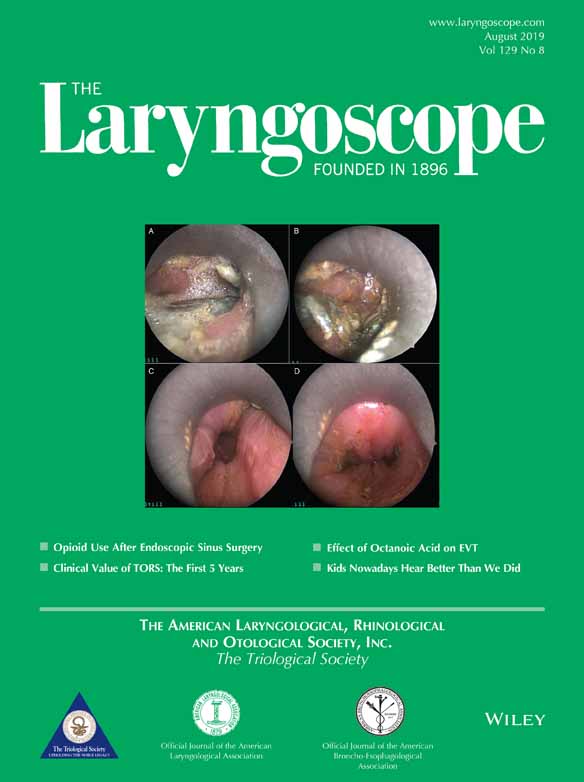Juvenile nasopharyngeal angiofibroma in prepubertal males: A diagnostic dilemma
Presented as a poster presentation at the American Society of Pediatric Otolaryngology Annual Meeting, Austin, Texas, U.S.A., May 18–21, 2017.
The authors have no funding, financial relationships, or conflicts of interest to disclose.
Abstract
Objectives/Hypothesis
To highlight the presentation and management of juvenile nasopharyngeal angiofibroma (JNA) in prepubertal children.
Study Design
Single-institution 10-year retrospective review.
Methods
All identified cases of pathologically confirmed JNA in children <10 years of age were assessed from a gender, imaging and embolization findings, tumor stage, surgical approach, and clinical outcomes standpoint, and compared to a group of stage-matched older patients from the same time period.
Results
Of 45 patients over the 10-year study period, four male children between 8 to 9.8 years of age were identified. One patient had University of Pittsburgh Medical Center stage 1 disease, and the other three had stage 3 disease at presentation. A malignant process other than JNA was of concern preoperatively in two of the four children due to a combination of aggressive imaging characteristics and an absence of pterygopalatine fossa involvement. Such pterygopalatine fossa involvement was comparatively uniformly present in a group of stage-matched JNA patients aged 15 to 21 years. All four prepubescent children underwent surgical resection via transnasal endoscopic approach following ipsilateral sphenopalatine artery embolization without the need for blood transfusion. There were no recurrences in three of the four cases at a median follow-up duration of 2.3 years (range, 0.8–6.4 years).
Conclusions
JNA may pose a diagnostic challenge in prepubertal males due to the atypical age at presentation and absence of classic imaging characteristics. Successful endoscopic transnasal resection is possible despite anatomic constrictions.
Level of Evidence
4
Laryngoscope, 129:1777–1783, 2019




